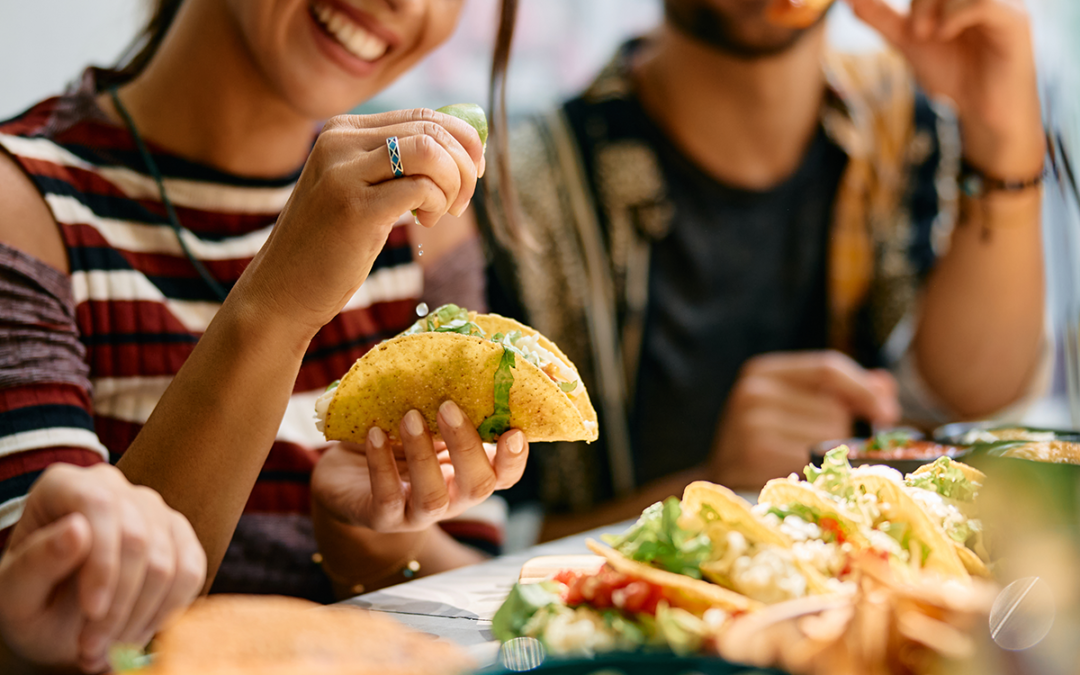In today’s competitive restaurant industry, digital marketing is essential for attracting new customers and driving more business. One of the most effective ways to boost your restaurant’s visibility online is through Pay-Per-Click (PPC) advertising.
PPC advertising for restaurants is a powerful strategy that allows you to target potential customers actively searching for dining options. This comprehensive guide will walk you through the basics of PPC advertising, compare Google Ads and Facebook Ads for restaurants, and offer expert tips on how to create successful PPC campaigns.
What is PPC Advertising for Restaurants?
PPC advertising is a digital marketing strategy where you pay for each click on your ad, rather than paying for ad placement. When used for restaurants, PPC allows you to reach customers actively searching for dining options, local eateries, or specific cuisines. By targeting the right keywords and audience, restaurants can increase foot traffic, reservations, and delivery orders—all through paid ads that appear on search engines, social media platforms, and other online spaces.
Key Benefits of PPC Advertising for Restaurants:
- Targeted Reach: With PPC, you can focus on a highly specific audience based on location, demographics, interests, and search intent.
- Immediate Results: Unlike organic strategies, PPC campaigns can generate immediate traffic and leads as soon as the ads go live.
- Budget Control: You have full control over your advertising budget, allowing you to set limits on spending and track your ROI.
- Measurable Outcomes: You can easily track the effectiveness of your campaigns and adjust strategies to optimize results.
PPC advertising for restaurants is not just about attracting random visitors but reaching customers who are actively searching for what your restaurant offers. Whether they’re looking for a cozy dinner spot, takeout, or a unique culinary experience, PPC ensures your restaurant shows up at the right time.
Google Ads vs. Facebook Ads for Restaurants
When it comes to PPC advertising for restaurants, two major platforms dominate: Google Ads and Facebook Ads. Each platform offers unique benefits and opportunities, so understanding the differences will help you decide which one aligns best with your goals.
Google Ads for Restaurants
Google Ads (formerly known as Google AdWords) is the dominant player in search engine marketing. With Google Ads, your restaurant’s ads appear in Google search results and across Google’s vast network of partner sites. Google Ads allows you to target customers based on specific search queries, meaning your restaurant can appear when someone searches for terms like “best pizza near me” or “restaurants in Las Vegas.”
Benefits of Google Ads for Restaurants:
- Intent-Based Targeting: Since Google Ads targets search queries, it reaches users with high intent. People searching for restaurant-related terms are often ready to make a decision, whether it’s placing an order or booking a reservation.
- Local Targeting: With Google Ads, you can target users based on their location, ensuring your ads reach potential customers who are nearby.
- Search Ads: The ads appear at the top of search results, giving you prime visibility when potential customers are searching for something specific like “best sushi restaurant in [your city].”
- Ad Extensions: You can add extra information, such as phone numbers, locations, and links to your menu, increasing your chances of engagement.
Facebook Ads for Restaurants
Facebook Ads, on the other hand, are highly effective for building brand awareness, engaging with potential customers, and promoting your restaurant’s offerings in a visual and interactive way. Facebook allows you to target people based on a wide range of factors, including age, location, interests, and behavior. In addition, you can run ads on Instagram, which is integrated into Facebook’s advertising platform.
Benefits of Facebook Ads for Restaurants:
- Highly Visual: Facebook Ads for restaurants are perfect for showcasing your food, atmosphere, and promotions through high-quality images or videos. It’s a great way to entice potential customers with visuals of your signature dishes.
- Behavioral and Demographic Targeting: Facebook allows detailed targeting based on interests, behaviors, and demographics. For example, you can target users who have shown an interest in food-related topics, travel, or dining out.
- Engagement: Facebook Ads are designed to encourage engagement, allowing customers to like, comment, share, and even book a table or order directly from the ad.
- Remarketing: With Facebook’s pixel tracking, you can re-target people who have visited your website, engaged with your social media pages, or clicked on previous ads.
Key Differences: Google Ads vs. Facebook Ads
- Intent: Google Ads targets people who are actively searching for restaurants or food, while Facebook Ads target people based on interests, behaviors, or demographics.
- Ad Format: Google Ads primarily consists of text-based ads, while Facebook Ads are more visual and interactive, often using images or videos.
- Cost: Google Ads can be more expensive due to high competition for popular keywords, while Facebook Ads can be more cost-effective, especially for targeting specific audiences based on interests or behaviors.
Both platforms offer powerful PPC advertising opportunities, and many successful restaurants use a combination of Google Ads and Facebook Ads to reach different audiences at various stages of the customer journey.
Best PPC Strategies for Restaurants
Effective PPC campaigns require careful planning, targeting, and optimization. Here are the best PPC strategies for restaurants to maximize their advertising efforts:
1. Focus on Local Search Keywords
For restaurants, local targeting is crucial. When potential customers are searching for dining options, they are likely looking for something nearby. Include location-based keywords in your Google Ads campaigns, such as “best Italian restaurant in [city]” or “restaurants near [popular landmark].”
2. Use Ad Extensions
Both Google Ads and Facebook Ads offer ad extensions, which allow you to include additional information in your ads. For Google Ads, use location extensions to display your restaurant’s address and phone number, and consider adding call extensions so customers can quickly call to make a reservation. On Facebook, you can use call-to-action buttons, such as “Book Now” or “Order Online,” to drive more engagement.
3. Create Engaging Visual Content
For Facebook Ads, high-quality visuals are a must. Use appetizing images of your food, interior, or special events to catch people’s attention. Videos can also be highly effective, especially if you’re promoting a new dish, special offer, or event.
4. Target Specific Audience Segments
Both Google Ads and Facebook Ads offer advanced targeting options, allowing you to tailor your campaigns to specific customer segments. For example, on Facebook, you can target foodies, travelers, or individuals who have engaged with your restaurant’s Facebook page. On Google Ads, target individuals searching for specific cuisines or restaurant types.
5. Offer Time-Sensitive Promotions
Encourage customers to take action by creating urgency. Offering limited-time promotions or discounts can compel potential customers to make a decision quickly. For example, you can run a PPC campaign offering a “10% off your first order” promotion that expires within 48 hours.
6. Optimize for Mobile
A significant amount of online searches and social media activity happens on mobile devices. Ensure your website is mobile-friendly and your PPC ads are optimized for mobile users. This means having a quick-loading site and ensuring your landing pages are easy to navigate on smartphones.
7. Test and Optimize Regularly
PPC campaigns require constant monitoring and optimization. Regularly test different versions of your ads (A/B testing), adjust your targeting, and analyze what’s working. Google and Facebook both provide detailed analytics to track the performance of your ads.
Measuring PPC Success
To ensure your PPC campaigns are driving the desired results, it’s essential to measure their performance regularly. Here’s how to track and assess the success of your PPC advertising for restaurants:
1. Track Click-Through Rate (CTR)
The click-through rate (CTR) measures how often people click on your ad after seeing it. A higher CTR indicates that your ads are engaging and relevant to your target audience. If your CTR is low, consider refining your ad copy, targeting, or design.
2. Monitor Conversion Rate
The conversion rate measures how many people took a desired action (such as making a reservation or placing an order) after clicking your ad. High conversion rates indicate that your landing pages and ads are effective in driving business. Use tools like Google Analytics to track conversions.
3. Calculate Return on Investment (ROI)
It’s important to assess the ROI of your PPC campaigns. For restaurants, this means comparing the amount you spend on ads to the revenue generated from those ads. If you’re spending more than you’re earning, it’s time to optimize your campaigns.
4. Use Google Analytics
Google Analytics provides valuable insights into how visitors interact with your website after clicking on your PPC ads. Track metrics such as time spent on site, bounce rate, and the number of pages viewed to better understand customer behavior.
5. Adjust Based on Data
Once you have enough data, make informed adjustments to your campaigns. If certain keywords are performing better than others, increase your budget for those keywords. If certain ads aren’t getting the engagement you want, consider changing the ad copy or imagery.
Conclusion
PPC advertising for restaurants is an essential strategy to drive traffic, increase visibility, and grow your customer base. Whether you choose Google Ads for search-based targeting or Facebook Ads for engaging visuals and audience targeting, understanding the strengths of each platform will help you make the best choice for your restaurant.
By applying the best PPC strategies and measuring your campaigns’ success, you can ensure that your restaurant gets the attention it deserves and keeps customers coming back for more.



